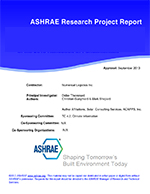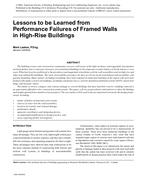Click here to purchase
Zero Net Energy has become a pressing issue in our industry, yet our current approach is not up to the regulatory task. We also need to clarify the definition of zero net energy buildings. There are several definitions of what it means (have differing metrics of site energy, source energy, emissions, and annual energy cost) and associated implied impacts – we need this consensus on the objective first.
The current California Title 24 energy code /regulatory process is not comprehensive enough for net-zero-energy analysis: It includes a ‘standard allowance’ for process energy (without project-specific adaptation). The HVAC, domestic hot water and other energy systems in the code’s modeling library is limited. The analysis ‘rules’ are very constraining.
The Title 24 performance analysis of systems is required to follow an existing approved (fixed) process–as defined in the Alternative Compliance Manual (ACM) – and using an approved computer program, DOE-2 based. This process does not allow one to account for performance of various non-traditional (likely more efficient) building solutions.
Further, the defined systems available in the ACM often do not realistically reflect how the systems are configured or are controlled / operated. For example, evaporative cooling is only allowed by the ACM for certain system types (it is allowed for central air systems, but not for fan coil schemes).
Finally, one needs to begin an understanding of future impacts to Title 24 or the building industry in California.
Citation: ASHRAE Conference Papers, Las Vegas, NV
Product Details
- Published:
- 2011
- Number of Pages:
- 5
- File Size:
- 1 file , 440 KB
- Product Code(s):
- D-LV-11-C049


